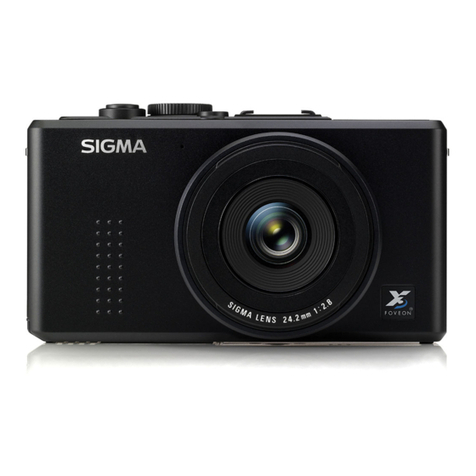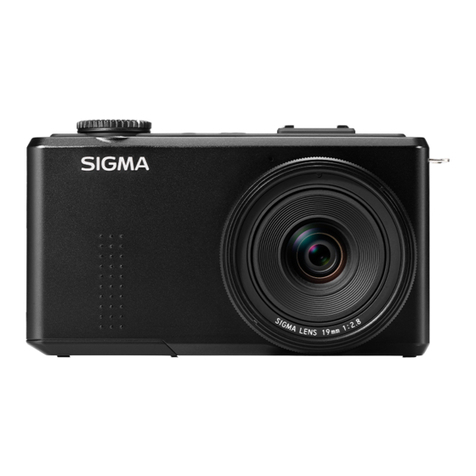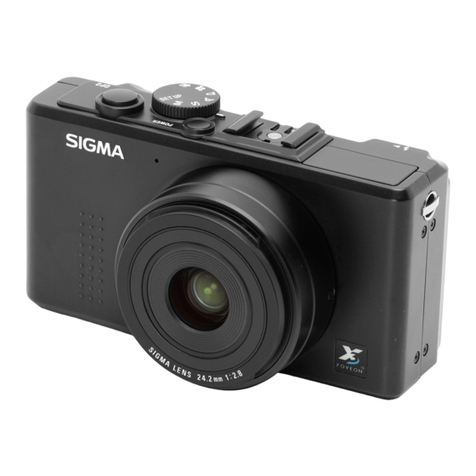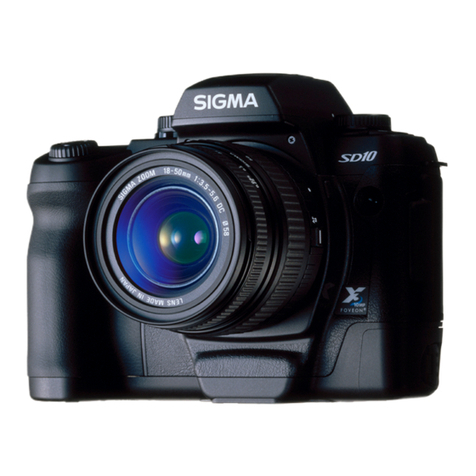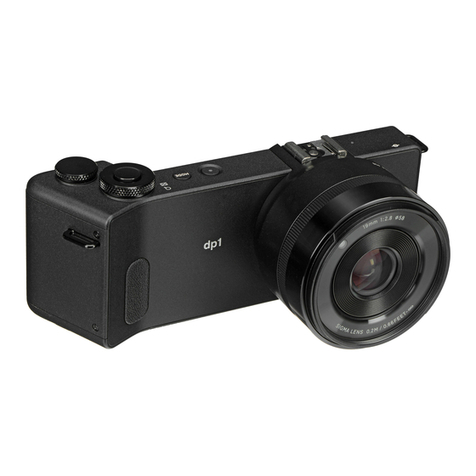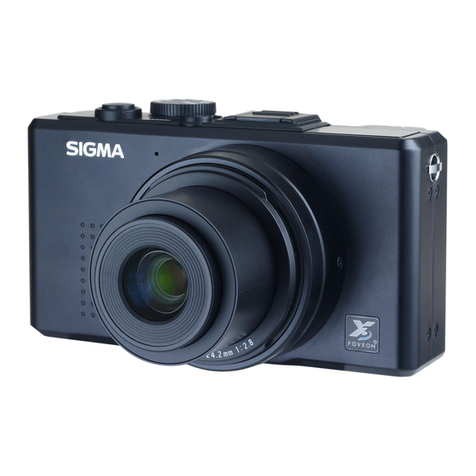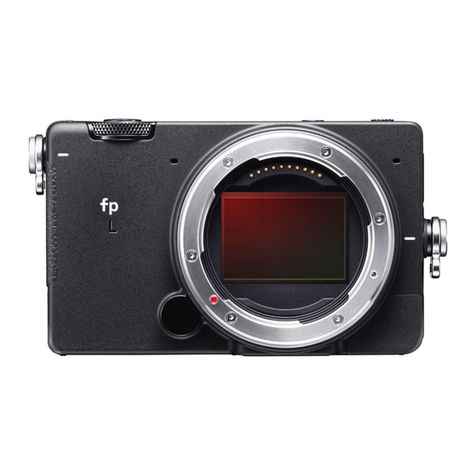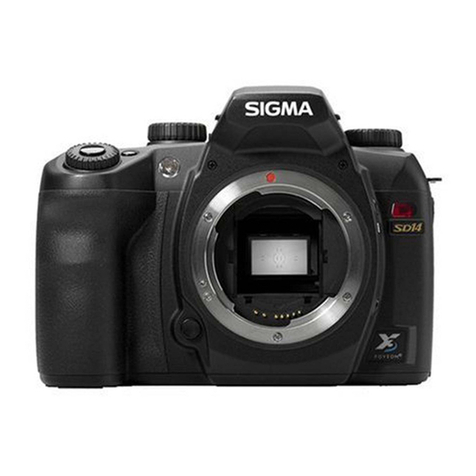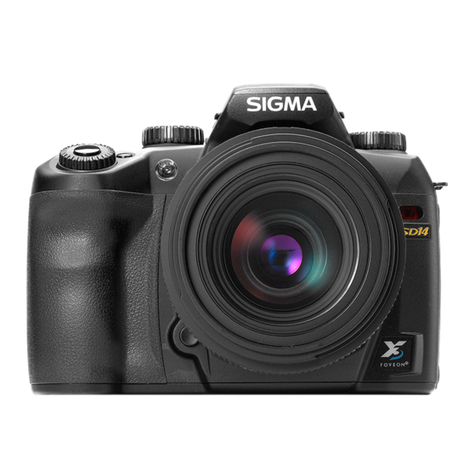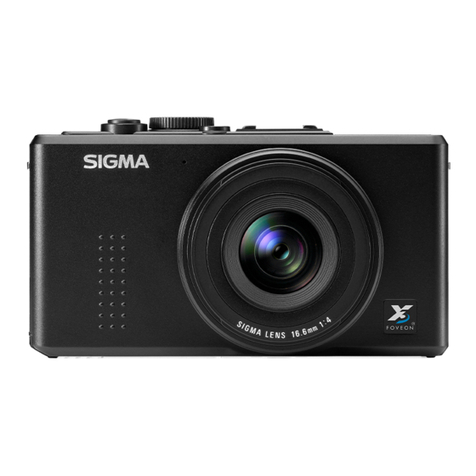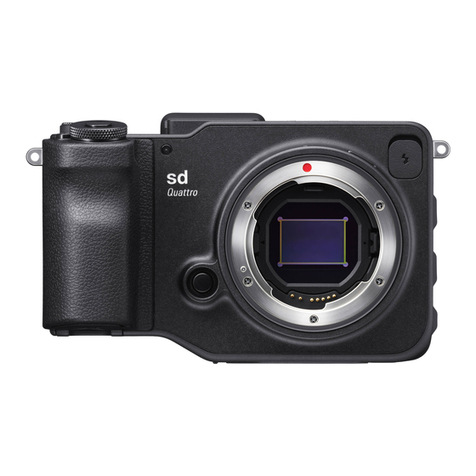Easily view images and settings
A 130,000- pixel 1.8-inch TFT liquid crystal monitor built into
the SD9’s back body panel reproduces clear, beautiful images.
With the built- in 4-Way Controller, it also serves as an easy-
to-use multifunctional interface.
White balance for the look you like
You can shoot under any lighting conditions with a choice of
white balance modes including "bright," "shady," "cloudy,"
"incandescent light," "fluorescent light," "flash," and "auto".
There’s even "custom" for customized white balance that you
can adjust according to the
shot viewed through the
back-panel LCD.
Records on CF cards and Microdrives*
The SIGMA SD9 records on reliable, high -capacity Type I
and Type II CF (CompactFlash) cards. Or, you can attach a
Microdrive* to hold even larger volumes of data.
*This recording medium uses a high-speed hard disk, so it is more vulnerable to vibration and
shock than flash memory CF cards. If you use a Microdrive, take extra care not to expose the
camera to shock or vibration, especially during recording and playback.
Pick your power source
For around- the-world shooting versatility, the SD9 can be
powered by two CR123A (DL123A) and two CR-V3 lithium
batteries ; two CR123A and four AA batteries (including
Ni-Mh AA batteries) ; or a dedicated AC adaptor (included with
the camera).
IEEE1394 and USB Interfaces
The camera has an IEEE1394 port as well as a USB port for extra-
speedy, versatile image transfer from the SD9 to a computer.
Shoots in NTSC and PAL formats
You can switch between the NTSC video standard (used in coun-
tries including Japan and the U.S.) and the PAL format (used in
Europe and other countries) for image playback on TV monitors in
many parts of the world.
Thumbnail screen Image Info screenFull screen
Main menu screen
Zoomed screen
Frame-by-frame ISO Setting
Frame- by-frame ISO selection is among the SD9’s functions
that are unmatched by any film camera. Choose among the
100, 200, and 400 ISO settings.
Function
White balance / main screen
White balance / sub screen
RAW format recording
The SD9 uses the RAW format –– the highest-quality record-
ing method –– to record information about light detected by
the FOVEON®X3™image sensor. The RAW data format pro-
vides pure data for high-resolution images, and uses lossless
compression for more compact, yet uncompromised data files.
Exclusive SIGMA Photo Pro software reads RAW data
The SD9 comes with SIGMA Photo Pro software for changing
the look of recorded RAW data image files. It’s easy to adjust
white balance, exposure, color balance, and contrast,
for example, or otherwise manipulate RAW data, without
compromising image quality or definition.
< Main Window >
This basic screen for
manipulating RAW data
is a simple, yet sophisti-
cated user interface for
control of various func-
tions.
Open RAW data files
Transfer and save RAW
image data
Save images (TIFF, JPEG)
Mark, lock, rotate, and delete images in the camera or on a PC
< Review Window >
Display image
Display adjusting palette
Highlight and shadow warning
Mark, lock, rotate, and delete images
< Image Quality Adjustment
Palette >
Adjust exposure, contrast, shadows,
highlights, saturation, and sharp
ness
Adjust colors
Adjust gray balance
Open, save, and delete custom
settings
Check histograms
< Image Information Window >
Check shooting information
Check image information
Copy information to the clipboard
Three resolution settings
Choose among three RAW data resolution shooting modes :
HI mode (2,268 x 1,512x 3) for optimal quality, MED
mode (1,512 x 1,008x 3) for recording more images at high
definition, and LOW mode (1,134 x 756x 3) for capturing
the most images per given memory capacity.
FOR MORE FLEXIBLE CONTROL OF IMAGE DATA
The SIGMA SD9 has exclusive advanced functions
Data recovery of deleted images*.
*
Recoverable only if no other operation has been performed after deletion of image data using
"Delete". If an image is taken right after deletion, the deleted image data cannot be recovered.
3-color histogram :
Signal levels
(appearing as dark to bright
areas in an image)
can be displayed on the monitor in red, green,
and blue. This makes it easy to check light and shadow details.
Seamless recording and playback
Recording and playback modes aren't separated so you can
quickly take advantage of photo opportunities and record
images even while playing back other images.
Intuitive interface
Clearly marked operation panel buttons make it easy for pho-
tographers to identify and use desired functions.
The SIGMA SD9 has an extensive variety of functions
Lock function / mark function : Simplifies image sorting.
Shortcut key settings : For convenient function setting
using the OK button.
5-stage zoom and pan : Lets you zoom in up to 400%
and pan while zooming, for checking focus and image
details in camera.
Information access : Accessing information about
camera settings, CF card data and image data is simple.
Customizable view : You can customize data displayed
on the info strip, using exposure warning display ON/OFF,
quick preview duration and style setting, and more.
Slide show settings : Use lock function/mark function to
display only those images that you want to view.


